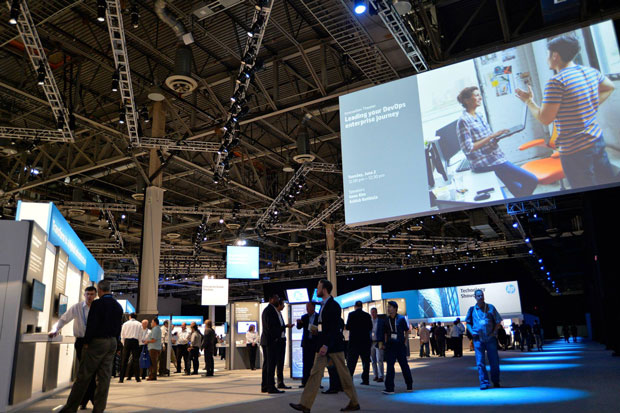HP Crushes Our Supercomputer Dreams, Kills Memristor Tech For ‘The Machine’
Nearly a year ago, HP unveiled its plans to build “The Machine”, a new type of computer that was going to open up a multi-billion dollar market and change the future of computing. Now, HP is simultaneously easing expectations while pointing to a still-impressive Machine that is on the near-horizon. Unfortunately, it seems that the memristor will not be a part of the machine – at least, not initially.

When HP first announced The Machine, it portrayed the yet-to-be-built computer as being wildly powerful – more so than computers in existence at the time. One of the components that caught everyone’s attention was the memristor, which is a memory technology faster than DRAM, yet capable of long-term storage. Now, HP is planning to build The Machine with more standard technology, including DRAM. The Machine will still be powerful, with 320TB of memory.
The new, scaled-back Machine is expected to appear next year. Subsequent models will work with other technologies, including memristors (at some, as-yet unspecified time). HP recognizes the challenges that it faces in trying to change computing so profoundly and it seems to have a plan for bringing the industry with it. The company is starting with existing technology and seeking to attract developers by sticking to an operating system they’re already familiar with: Linux.

Over time, HP hopes to both improve the capabilities of The Machine and reduce its physical size, so that the system is able to fit into smaller devices (like printers and, someday, smartphones) and take over some of the workloads that are typically handled by cloud computing. For now, HP’s job is to manage expectations while convincing the industry that it holds the key to major change.

When HP first announced The Machine, it portrayed the yet-to-be-built computer as being wildly powerful – more so than computers in existence at the time. One of the components that caught everyone’s attention was the memristor, which is a memory technology faster than DRAM, yet capable of long-term storage. Now, HP is planning to build The Machine with more standard technology, including DRAM. The Machine will still be powerful, with 320TB of memory.
The new, scaled-back Machine is expected to appear next year. Subsequent models will work with other technologies, including memristors (at some, as-yet unspecified time). HP recognizes the challenges that it faces in trying to change computing so profoundly and it seems to have a plan for bringing the industry with it. The company is starting with existing technology and seeking to attract developers by sticking to an operating system they’re already familiar with: Linux.

Over time, HP hopes to both improve the capabilities of The Machine and reduce its physical size, so that the system is able to fit into smaller devices (like printers and, someday, smartphones) and take over some of the workloads that are typically handled by cloud computing. For now, HP’s job is to manage expectations while convincing the industry that it holds the key to major change.

